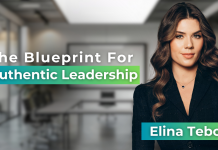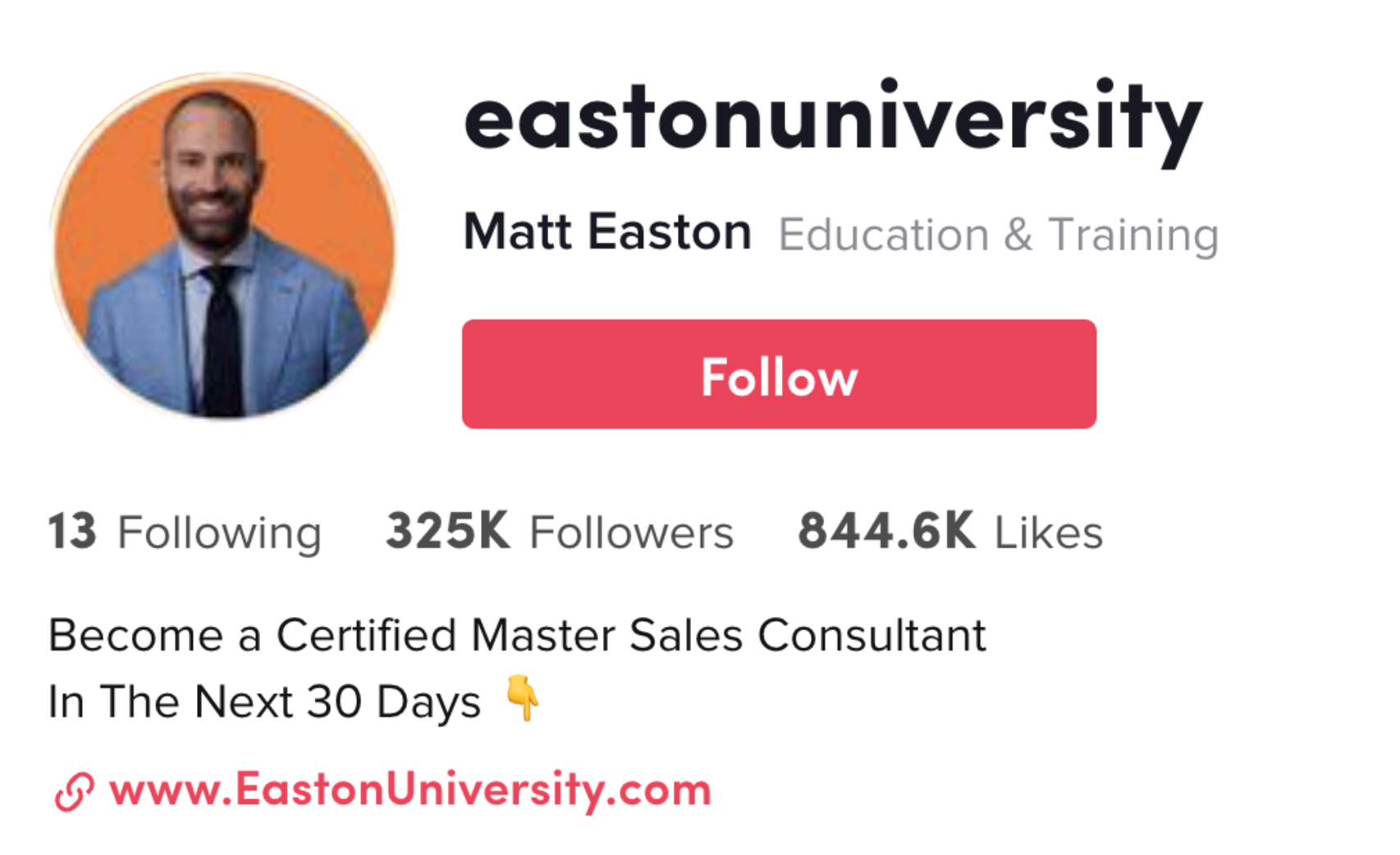When it comes to closing, many salespeople have old, catchy phrases from years past that can make customers feel defensive and frustrated. So, to avoid those outdated closing lines, many salespeople stop trying to close altogether. Neither of these approaches are ideal for the modern car buyer. Today on the Atlanta Small Business Show, we’re pleased to welcome back Matt Easton, sales trainer, consultant, and Founder of Easton University, who discusses how salespeople can close more deals in ethical and helpful ways.
Jim Fitzpatrick:
Matt, thank you so much for joining us on the show.
Matt Easton:
Man, it’s great to be here again. Always love it, always love it.
Jim Fitzpatrick:
Great. So we got so many great responses last time that you were on. One of them came up, somebody came in and said, “Listen, I’d love for you to ask Matt what do you do with that customer when you’re at that point that you’ve shown everything, you’ve done the feature presentation. They like you. You like them. But you’re wondering, okay what’s the next step? How do you get them to engage with you to go to that next level of the sale?”
Matt Easton:
How do I close, right?
Jim Fitzpatrick:
Yeah, how do I close?
Matt Easton:
Perfect. All right. So, all right, this is going to be huge for everybody that’s watching. I’m about to give you the good stuff.
Jim Fitzpatrick:
Are you ready folks?
Matt Easton:
I’m about to give you the good stuff. This is so simple but yet nobody does it. All right, so when we think about closing a lot of us either have some old catchy phrase left over from that guy, hey Jim, if you don’t get it right now it’s going to be gone. Come on. We don’t want to act like that.
Jim Fitzpatrick:
If the numbers are agreeable.
Matt Easton:
Right. Some silly stuff. Not today. Not ever again. That’s a great way to get yourself some bad Yelp reviews.
Jim Fitzpatrick:
Yes.
Matt Easton:
So the other, if we don’t want to use that kind of old trickery, for lack of a better word, what a lot of people do is they don’t close at all.
Jim Fitzpatrick:
Yeah. That’s right.
Matt Easton:
Which isn’t good.
Jim Fitzpatrick:
No.
Matt Easton:
I’m just going to service you. I’m going to be your friend. I’m going to be nice. And I’m just going to hope for the sale.
Jim Fitzpatrick:
Right. Because sometimes, especially in this environment now, this new way and all the information and people can buy anything they want right on their hip. Some salespeople are afraid to ask a closing question. Right? So to your point-
Matt Easton:
Absolutely.
Jim Fitzpatrick:
… The people just go and nobody says anything.
Matt Easton:
Yes. And this is something we talk about with our students in our live events with Easton University. You have to be ethical. And being ethical sometimes the best service you can ever provide to a customer, Jim, is asking those difficult questions. And I’ll explain. If you’re a cardiologist, and you’ve got somebody comes and their heart’s beating 200 beats a minute and they’re chugging Red Bull. And you don’t want to try and close them on not drinking 42 ounces of energy drink every hour, and taking maybe some blood pressure medication. That patient’s going to die.
Jim Fitzpatrick:
Right.
Matt Easton:
Okay. I know that most of our viewers out here aren’t cardiologists. But also think about if you’re not helping that single mom on a vehicle purchase, or somebody that’s trying to plan their wedding or whatever it is. And they end up saying, “I need to think about it,” and they wait, and that product’s gone, ethically you need to take a good part of that responsibility.
Jim Fitzpatrick:
Yeah. You’re right.
Matt Easton:
The fact that this mom doesn’t have a vehicle or this bride does not have a venue for her wedding, that’s on you. You need to close every deal. You need to at least make an attempt. Now, if you’d like, I can show you how to do that.
Jim Fitzpatrick:
Please do.
Matt Easton:
In a way that’s not pushy, not manipulative, and most importantly does not get them to a point where it’s, I need to think about it and they walk away and you don’t know what’s going on.
Jim Fitzpatrick:
That’s right. And then your manager says, “What happened to those people?” And you’re like, “I don’t know. I showed them everything. And they”-
Matt Easton:
They’re supposed to come back.
Jim Fitzpatrick:
… They’re supposed come back. They said, “I’ll be back.” And then we know what happens there.
Matt Easton:
Correct. And that’s where that efficacy comes in of they don’t realize the risks at stake. So they’re going to go wander off and in today’s world, the product’s not going to be here. So you’ve been ethical. You’ve gone through all the other stuff that I’ve coached them on in the other segments. You’re starting the conversation correctly. We’re at a point where I want to ask you if you want to make a purchase. Okay. The first thing that we want to realize is you want to avoid what I would call an all or nothing request. That’s a yes or no answer.
Jim Fitzpatrick:
Okay.
Matt Easton:
Jim, do you want to buy it?
Jim Fitzpatrick:
No.
Matt Easton:
Yes, no. Oh, darn it. Right? Why not? What can I do to get your business? We just took the DeLorean back to 1980s, right?
Jim Fitzpatrick:
That’s right.
Matt Easton:
Right. What can I do to get your business? So I want to be able to ask you in a way where I’m not asking you to do anything. The way to do that is to, instead of asking you a yes or no question, and all or nothing request, to ask you a timing question. Okay? So if you’re going to reject me, essentially the only way you can reject me if I ask you a timing question is not right now. Right? So how I rephrase that is instead of saying, Jim, do you want to do blank? I’m just going to say, Jim, does it make sense to blank? By pivoting, do you want to buy this car? That’s a yes no question. Does it make sense to buy the car is a timing question. If you say no to, does it make sense, you’re essentially saying, not right now.
Jim Fitzpatrick:
Right.
Matt Easton:
Right? By the way, parents don’t let your kids watch this. Because your kid’s going to be like, “Hey dad, does it make sense to give me $20 because I’m going to the mall?” So if I say to you, Hey Jim, let’s just pick the single mom with the minivan. Does it make sense to purchase the vehicle? You can say, yes. Or you can say, no. Right? If you say no and I’ve asked you, “Does it make sense?” I’m in a perfect position to say… Here you say, no, to me. Hey Jim, does it make sense to purchase the vehicle?
Jim Fitzpatrick:
No, not right now.
Matt Easton:
Got it. Got it. What’s a good next step then? So I’m able to now pivot instead of, Jim, do you want the vehicle? No. What do I need to do to get your business? Why not? By the way, if you work in sales, never say, why not?
Jim Fitzpatrick:
Right.
Matt Easton:
They’re going to make up reasons why not. They will answer the questions you’ve asked them.
Jim Fitzpatrick:
That’s right.
Matt Easton:
Right?
Jim Fitzpatrick:
And then later they’ve got to live up to that lie that they just told you.
Matt Easton:
Live up to the lie. Exactly. So don’t put yourself in that position. So, “Jim, doesn’t make sense to purchase the vehicle?” “No, not right now.” What’s a good next step then?
Jim Fitzpatrick:
Right.
Matt Easton:
And notice what I did there. I didn’t say anything after that. I paused. Right? I’m not a hustler from 30 years ago, just waiting to throw out my one liners. I genuinely want to know what the next step is. Right?
Jim Fitzpatrick:
Right. Without being intrusive to that prospect.
Matt Easton:
Exactly. And now let me show you how we can make sure that even the most evasive non-communicative customer, the one that just clearly is not going to give us anything that we still set something. So I’m going to ask you, does it make sense to blank? You’re going to say, no. I’m going to pause. What’s a good next step then? Right? Most of the time you’re going to give me a next step. Let me think it over and I can…
Jim Fitzpatrick:
Sure.
Matt Easton:
Other segments, we can talk-
Jim Fitzpatrick:
I need to get with my spouse.
Matt Easton:
Correct.
Jim Fitzpatrick:
We want to look at one other product. Yeah.
Matt Easton:
Yeah. And I’m not a big fan of forcing anybody. I have a different take on those things, but we can save those for another day. But most of the time you’re going to tell me what the next step is.
Jim Fitzpatrick:
Right.
Matt Easton:
But let’s say you just say, “I don’t know. I need to think about it.” You don’t give me anything. Now I’m just going to rephrase that question and I’m going to phrase it in terms of what’s a good next step for me or what’s a good next step on my end. So you say, I need to think about it when I say what’s a good next step.
Jim Fitzpatrick:
Sure.
Matt Easton:
So I say, hey Jim, does it make sense to purchase the vehicle?
Jim Fitzpatrick:
No.
Matt Easton:
Got it. Got it. What’s a good next step then?
Jim Fitzpatrick:
I just have to think about it.
Matt Easton:
Got it. Got it. What’s a good next step on my end?
Jim Fitzpatrick:
Probably to follow up with me in a week or so.
Matt Easton:
Awesome. Awesome. I will touch base with you, what’s today? Tuesday. I will call you Thursday if I haven’t heard from you before then. Fair enough?
Jim Fitzpatrick:
Sounds good.
Matt Easton:
Perfect. Now I’ve taken control. Now notice the nuance there. See, it’s almost impossible. You struggled with that.
Jim Fitzpatrick:
Right.
Matt Easton:
With evading me when I ask what’s a good, your brain you’re automatically going, well, I need to give this person a next step. Right?
Jim Fitzpatrick:
That’s right.
Matt Easton:
And you just went to your unspoken objection, the timing, which we could have gone off on another track because I want to know-
Jim Fitzpatrick:
Sure.
Matt Easton:
… Why the timing isn’t right. Again, that’s what we’ve talked about in other segments. Ethically it is my responsibility to know what your timing is.
Jim Fitzpatrick:
Right.
Matt Easton:
Not because I want to pressure you into a purchase. Because I want to make sure that I’m providing you with the scope of everything that’s going on. Because again, as we’ve talked about in other segments, if you come back in two weeks, and whatever it is that we’ve been talking about is either gone or the price has changed, gone up, that’s I would say a majority my responsibility.
Jim Fitzpatrick:
Sure. What do you say to the salesperson that’s out there that’s listening and they say, “Well, it sounds like you just let that prospect out the door without turning up the heat at all to try to still close today.” Is there a caveat to that, that says, well, it sounds to me like the individual just isn’t sold enough in order to still try to close today.
Matt Easton:
Yes. And that philosophy worked 30, 40 years ago when we were selling in a vacuum. Here’s what happens today. As we’re talking, I’m already looking at my other options on my phone. If I pressure you right here, right now in this moment. Okay? Our customers were born at night. They weren’t born last night. Not only are you going to see that I’m tricking you, you’re never going to come back, or worse you’re going to leave a Google review somewhere that I can’t ever take down that’s going to live in perpetuity.
Jim Fitzpatrick:
Yeah. So you’re saying in today’s way, don’t go that extra step and don’t keep pushing because now you’re going to lose that prospect forever.
Matt Easton:
Correct. I want them to understand that person.
Jim Fitzpatrick:
Right.
Matt Easton:
I don’t want them to pressure. Nothing that I teach feels high pressure. Pressure does not work and the repercussions of pressure are deadly. Right?
Jim Fitzpatrick:
Yeah.
Matt Easton:
I can’t tell you how many people that have come to me to put their team on training because of the fact that they had years ago, somebody act with pressure and those reviews, those things are still sitting out there today that they can’t do anything about.
Jim Fitzpatrick:
That’s right.
Matt Easton:
I would rather you make a decision to go someplace else and tell people, well, Jim didn’t have what we wanted. Or, we couldn’t make the numbers work, but Jim’s a great, great guy. They’re a great, great outfit. I can’t say anything bad about the organization. It didn’t work out for me.
Jim Fitzpatrick:
Right. Right.
Matt Easton:
That’s still a win for me.
Jim Fitzpatrick:
Sure.
Matt Easton:
What I don’t want to have is somebody go, “Don’t talk to them. They’ll pressure you.”
Jim Fitzpatrick:
That’s right. That’s right.
Matt Easton:
Not good.
Jim Fitzpatrick:
Which is deadly.
Matt Easton:
Deadly. Deadly. Because as we’ve talked about in other segments, right in their hand on their phone.
Jim Fitzpatrick:
That’s right.
Matt Easton:
Norma Jean in Broken Bow, Oklahoma has a platform.
Jim Fitzpatrick:
That’s right.
Matt Easton:
We don’t know how many followers she has.
Jim Fitzpatrick:
That’s right.
Matt Easton:
We don’t know who’s in her knitting circle. Or who she’s related to.
Jim Fitzpatrick:
That’s right.
Matt Easton:
It used to be, you just get angry and you do what? My mother still does this because she’s 80 years old and she’s from South Boston. She writes a letter to the manager. Right? I’m going to write the manager a letter. Those days are gone.
Jim Fitzpatrick:
That’s right.
Matt Easton:
You hope that’s what they’re thinking. In today’s world it’s-
Jim Fitzpatrick:
On the way out or while they’re still sitting there.
Matt Easton:
… One star review.
Jim Fitzpatrick:
That’s right.
Matt Easton:
And that lives in perpetuity.
Jim Fitzpatrick:
Yeah. There’s no question about it. Matt Easton, sales trainer, consultant, founder. This is why we bring him in because he’s got great techniques for today’s selling. Today’s selling. I want to underline that. Because some of you salespeople out there might go, well, I would’ve closed that individual. And here’s the technique I would’ve used. But I agree with Matt that, man, you’re going to have a tough time as this sales game continues to change. As we see it changing right now before our very eyes. So keep in mind, everybody has one of these on their hip and they can go anywhere not just in the city, in the country, in the world for that matter for the product you are selling. So be careful with how you treat those customers. And it’s all about having the right process and word track.
Matt Easton:
Exactly right. That’s right.
Jim Fitzpatrick:
Matt Easton, thank you so much.
Matt Easton:
Thanks, Jim.
Jim Fitzpatrick:
Thank you.
The Atlanta Small Business Network, from start-up to success, we are your go-to resource for small business news, expert advice, information, and event coverage.
While you’re here, don’t forget to subscribe to our email newsletter for all the latest business news know-how from Atlanta Small Business Network.








